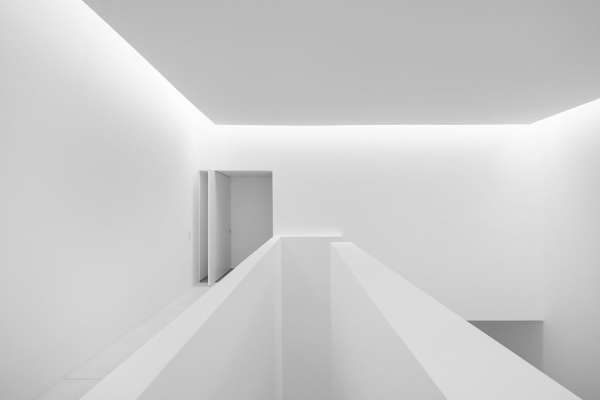Casa Atlântica
Acayaba + Rosenberg

Situated in the centre of a residential neighbourhood Hyōgo, Japan, Ho-House—designed by Kubota Architect Atelier—stands out like a foreign object. Angled geometrically with thin white concrete slabs, the design stretches itself across the property to deliver outstanding visual effects with its elongated surfaces and folding facades.
Greeting the street with panels of opaque glass, the design parti can be clearly divided into two masses. Indented from the dwelling’s front, a translucent screen protects the privacy of an inner open courtyard. Running along the length of said screen is a floor slab that folds down and becomes an acute wall, creating a pocket of space for multiple uses. Peeking from its side is a curtain of bamboos planted in white pebbles, vaguely referencing traditional rock gardens in Japan. The organic curves of the plants soften up the sheer mass of the structure.
The other mass is raised to house a private bedroom that intakes a considerable amount of filtered sunlight. Here, Kubota Architect Atelier ignites a contradicting feeling—one that conveys a sense of voyeurism yet still maintains a degree of concealment. Toying with the transparency of visual, the interior features extended walls made of glass and double-height communal areas for an impression of fulfilled freedom.
Attached to the glass walls are surfaces made of brown bricks and white plaster. The monochromatic palette highlights pure white furnishes within the house; where furniture is placed, the vastness of space gives an illusion of levitation. Not only does this encompass the idea of Ma—a Japanese concept of negative space—but it also expands viewpoints when inhabitants occupy the residence.
Perhaps the most intricate detail of Ho-House is lines of pebbles that contour different spaces of the project. They run from the outer edge, circle the inner courtyard, and filter into the interior. This linear matrix connects the outside and inside of the architecture, provoking an image of continuity and endlessness.
Ho-House is a project that promotes modernity in both its appearance and ideology. Its minimal composition, open plan, and use of transparent boundaries strip away individualistic privacy to insert a mindset of collective freedom.











